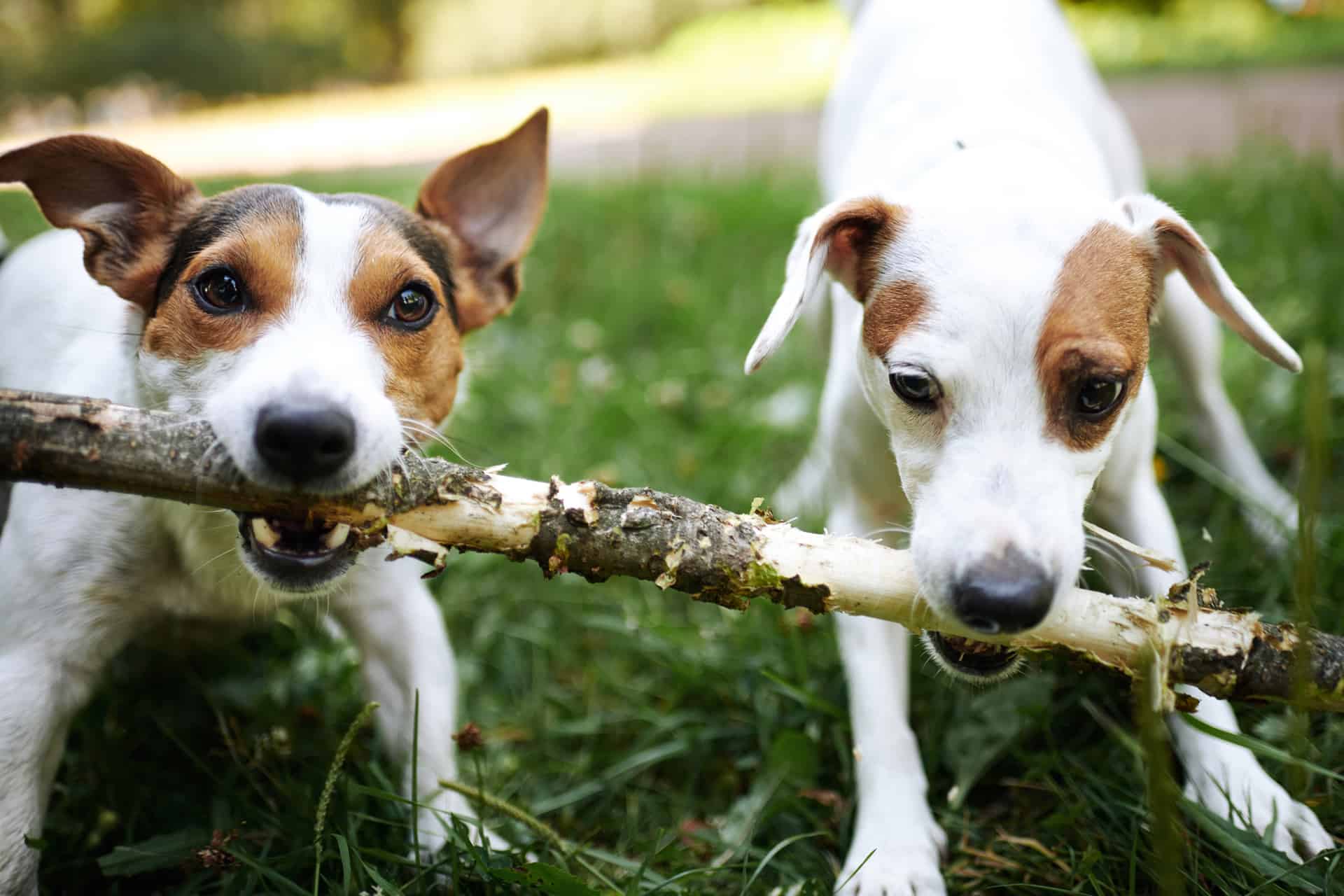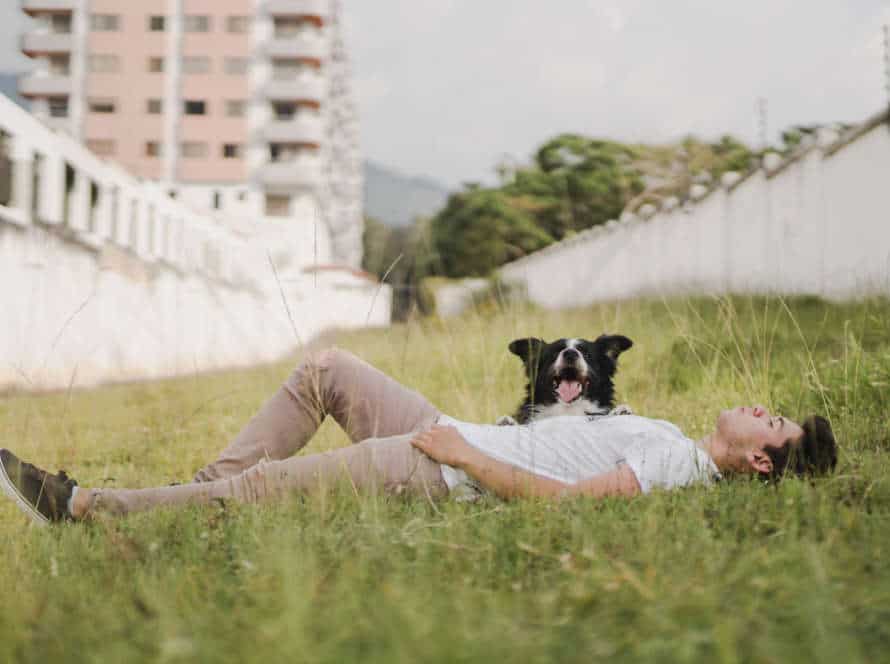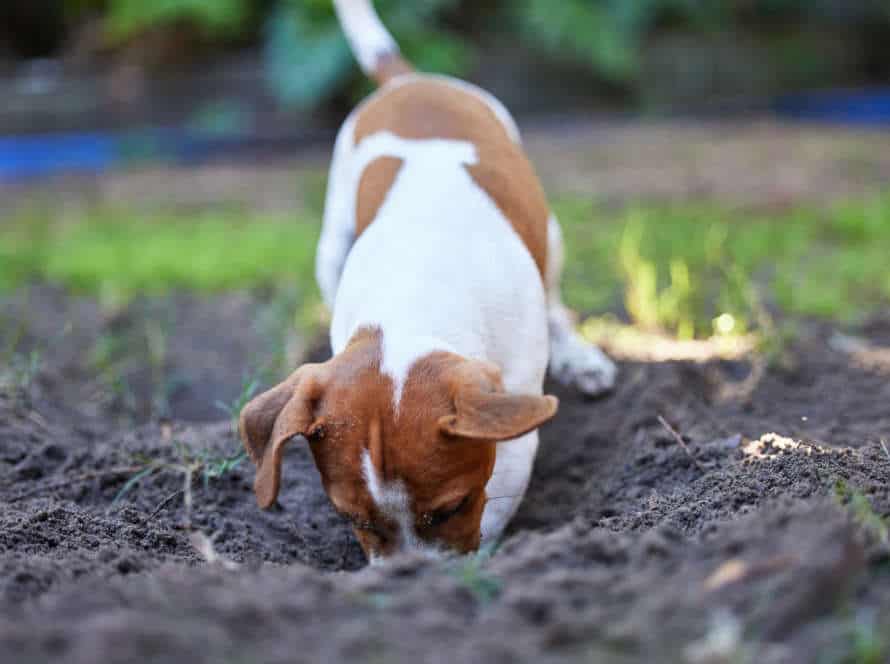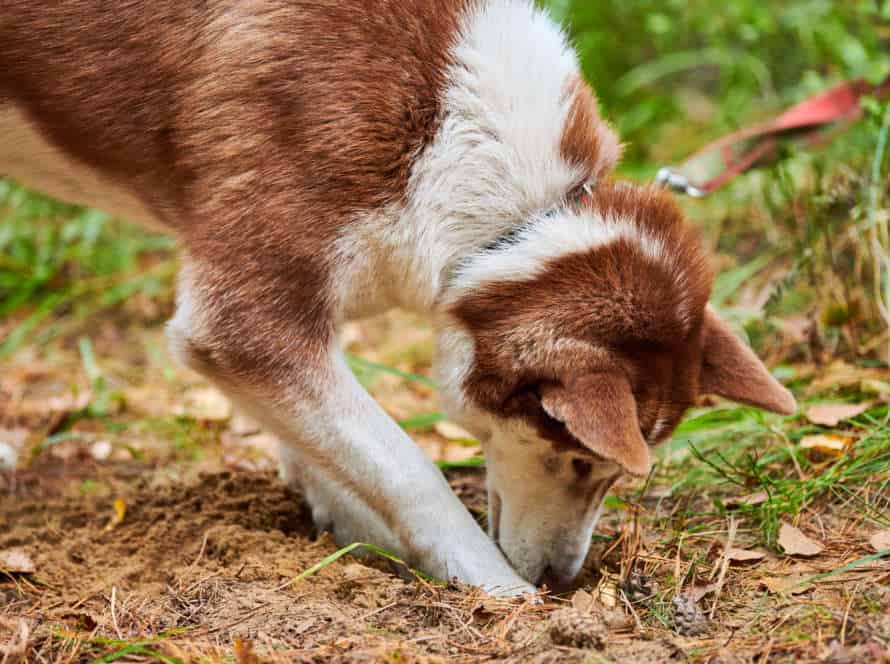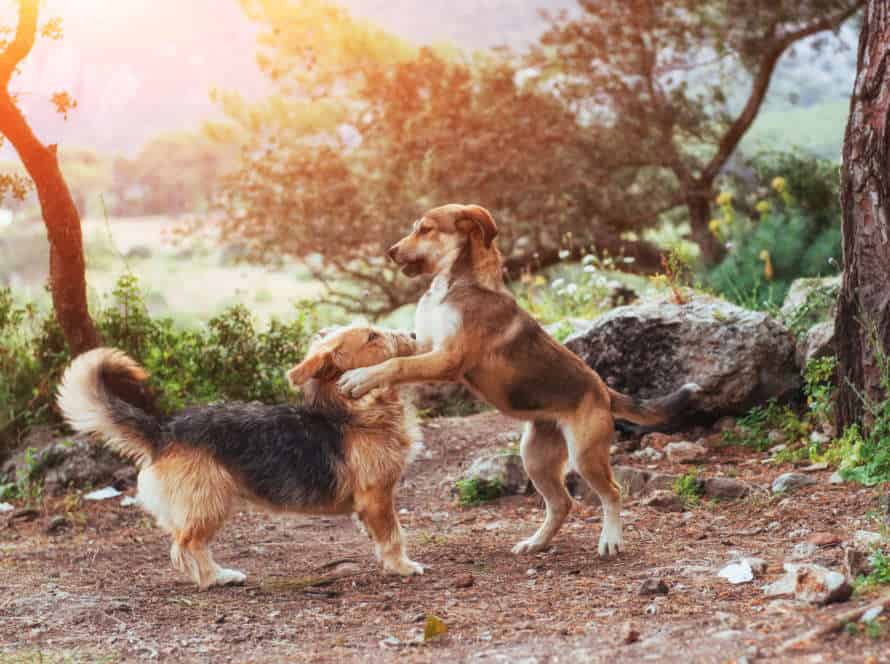Social Aggression: Conflict Within the Pack
Social aggression is a form of conflict that happens between animals in packs or groups. It’s common in lots of species, like wolves, primates, and dogs and cats.
It can involve physical fights, but also subtler things such as exclusion, intimidation or manipulation. Knowing what causes and results from social aggression can help pet owners and animal lovers to spot it and stop it. This way, the safety and health of all creatures involved are secured.
Types of Social Aggression in Animals
Animals display social aggression to gain control of resources and space. This type of conflict manifests between animals of the same social group. It can take multiple forms, depending on the species. Let’s explore the different types of social aggression in animals more closely.
Territorial Aggression
Territorial aggression is a type of social aggression seen in animals who have fixed home ranges. It happens when an animal thinks its space or resources are in danger.
Examples of animals with territorial aggression are wolves, lions, domestic dogs, and birds of prey. Conflict in the group can occur when they fight over food, mating, and other essentials.
It’s important to understand how animals act aggressively. This helps avoid injuries if you get near them. Identifying and avoiding triggers, or handling animals right can minimize the risk of aggression-related accidents.
Dominance Aggression
Dominance aggression is a type of social aggression seen in animals. This behavior occurs in the context of a social hierarchy and can include growling, snarling, biting, or physical attacks.
Other types of social aggression include fear aggression, territorial aggression, and possessive aggression. Fear aggression is when an animal feels scared, threatened, or cornered. Territorial aggression is when an animal is trying to protect its territory. Possessive aggression occurs when an animal is overly protective of its resources such as toys and food.
It is important to understand that social aggression in animals is a natural response to the environment. Preventing these behaviors from escalating is important. Doing so involves providing proper training, socialization, and recognizing signs of aggression.
Fear Aggression
Fear aggression is a typical type of social aggression found in animals, especially dogs. When threatened, animals may show aggression as a defense against perceived danger. This can show up in many ways, such as barking, growling, biting, and attacking.
Why does fear aggression occur? It could be due to inadequate socialization as a pup, traumatic events, or medical issues.
Signs of fear aggression include: raised fur, pinned back ears, and dilated pupils. If you spot these signs, consult an animal behaviorist. They can give advice and craft a training plan tailored to your pet to help them conquer their fear and aggression.
Pro Tip: Do not punish or reward aggressive behavior. Punishment can increase the animal’s fear and anxiety leading to more aggression. Reach out to a professional for help in addressing the source of your pet’s fear aggression.
Factors That Contribute to Social Aggression
Social aggression happens when members of a pack are in disagreement or competing for resources. This could lead to rank disputes and unfriendly behaviour. Things like the size of the group, gender and age of the members all make social aggression more likely. Let us delve deeper.
Genetics
Social aggression in animals is caused by various things, such as genetics and environmental cues. Genetics play a huge part in an animal’s tendency to be aggressive. Studies have found certain genes and combinations of them that lead to aggressive behaviour. For instance, research on dogs has revealed certain genes that can cause aggression towards other dogs and people.
It’s essential to remember that genetics doesn’t entirely control an animal’s behaviour. Environment is just as important. Factors like the animal’s upbringing, training, and socialization influence their behaviour towards other animals.
Comprehending the genetic leanings of animals can help breeders and owners make informed decisions while selecting breeding pairs. This helps avoid passing on aggression to the offspring.
Environment
Social aggression can occur when two or more of the same species are in conflict. This can be due to environmental factors, like competition for resources, borders and mating rights. Genetics, social structure and past experiences of the individuals can also bring about social aggression.
To reduce it, we must understand the environmental factors that lead to it. We can do this by giving enough resources to all, setting up a just social structure, and considering past experiences.
Early action can be vital in stopping social aggression from getting worse, and causing long-term damage to the group.
Hormones and Chemicals
Hormones and chemicals can be mighty when it comes to social aggression in animals. Testosterone, serotonin, cortisol, and oxytocin are prime examples.
- Testosterone: High levels in males can lead to aggressive behavior towards other males and females.
- Serotonin: Low levels can cause animals to act impulsively and aggressively.
- Cortisol: The stress hormone can make animals more aggressive and intolerant of social interactions.
- Oxytocin: Referred to as the “love hormone,” it can promote positive social behaviors – but also make animals overprotective of their group.
Knowledge is key! Knowing the role of hormones and chemicals can help owners and caretakers manage social aggression in their pets or livestock.
Social Hierarchy in Animal Groups
Social conflicts amongst animals? Many consider a hierarchy. Aggression is the way to decide who’s on top. It can be physical or subtle, like postures or noises. Let’s explore how animal groups create a social order.
Alpha and Beta Animals
Alpha and beta animals are terms used to explain the social order between different mammals, such as wolves, dogs, and primates. An alpha is usually the dominant animal, making all the group decisions. Beta animals follow their orders.
But, recent findings suggest the hierarchy is more complex. In some groups, multiple animals have high rank and share leadership. Moreover, aggression and dominance aren’t always clear. Conflict can arise over resources, mating, or other matters.
Observing animal behavior can teach us about ourselves. It can show us how to resolve arguments and cooperate.
Tip: Watching animals in the wild or captivity can be educational and fun. But, remember not to intrude on their space and disturb their natural behaviors.
How Social Hierarchy is Established
Animal groups have social hierarchy established through social aggression and submission behaviors. The hierarchy reduces physical conflict and encourages cooperation, like in wolf packs.
Social aggression is a set of actions used to show dominance, control resources and stay dominant. These actions include body posturing, vocalization, facial expressions, and even physical attacks. High-ranking animals use aggression to control lower-ranking animals who display submissive behaviors, like avoidance and appeasement.
Conflict can arise when lower-ranking animals attempt to challenge higher-ranking animals. In these cases, dominant animals use either aggressive or submissive behavior to re-establish control and maintain their social status.
Understanding social hierarchy among animals can show us the behavior of other social animals, like humans. It can also be helpful in managing animal populations, decreasing aggression and promoting animal welfare.
Recognizing Signs of Social Aggression in Animals
Animals can be social aggressors in various ways. It may be low-key or physical. Knowing the signs of social aggression helps us spot and manage it. This article will tell you how to recognize the signs and manage the situation.
Body Posture and Facial Expressions
Body postures and facial expressions are essential to recognize signs of social aggression in animals. When animals are in a conflict, they show body postures and facial expressions that reveal their feelings and intentions.
Here are some signs to watch for:
- Fur or feathers raised, pinned ears, and an alert body posture.
- Direct eye contact, snarls, growls, or bared teeth.
- Repeatedly showing teeth or neck, crouching, and stalking.
It’s key to know these signs to keep you and your pet from harm when dealing with other animals. Give animals space and let them show their social behavior before trying to interact with them.
Pro Tip: When meeting a new animal, move slowly and calmly. Avoid direct eye contact and sudden movements.
Vocalizations and Sounds
Vocalizations and sounds are a powerful tool to detect social aggression in animals. This is when there is conflict within the pack or group.
Common vocalizations that animals make when displaying social aggression include:
- Dogs: Growling, snarling, barking, and howling when feeling threatened or territorial.
- Cats: Hissing, growling, and yowling when feeling threatened or wanting to be dominant over other cats.
- Primates: Screams, hoots, and other vocalizations that signify various emotions.
- Birds: Loud squawking, screaming, and flapping of wings when needing to warn of danger or signal aggression.
These vocalizations give us a glimpse of an animal’s feelings, helping us recognize social aggression and take necessary measures to prevent conflict.
Aggressive Behaviors and Actions
Animals may act aggressively, especially when in a group. Knowing the signs of social aggression and why it happens is key to controlling it.
Signs of social aggression in animals can include growling, baring teeth, biting, chasing, and territorial marking. This behavior is usually due to competition for resources like food, land, or mates.
Preventing social aggression in animals means giving them enough resources, like food, space, and attention. Training and socialization can also help, by setting boundaries, promoting good behavior, and reducing stress. If the aggression persists and is dangerous, you may need to remove the animal from the pack and get professional help.
Managing Social Aggression in Animal Groups
Social aggression is common among animals, like primates and birds. We need to know how to take care of it. In this article, we’ll look at strategies to reduce social aggression in animals. These approaches can help make animal groups work better.
Positive Reinforcement Training
Positive reinforcement training is a great way to manage social aggression in animal groups, especially those with complex social structures like wolves or primates.
Using rewards, like treats, attention, or praise, trainers can encourage desirable behaviors and discourage disruptive or aggressive behaviors to promote peace.
When it comes to social aggression, positive reinforcement is effective in addressing conflict within animal packs. For instance, trainers can reward submissive or cooperative behaviors like when an animal backs down from a confrontation or lets another animal access a resource.
By doing this, over time these rewards can reinforce more adaptive behaviors and reduce aggression, resulting in a more peaceful and stable social structure within the group.
Environmental Enrichment
Environmental enrichment is a great way to reduce social aggression between animal groups. Stimulation and opportunities for natural behavior can help. Here are some techniques that can be used:
- Increase space and give more food sources, to lessen competition.
- Add unfamiliar objects, to encourage exploration and reduce aggression.
- Add hiding spots, like boxes and tunnels, for a retreat option.
- Positive reinforcement for positive behavior, to minimize negative behaviors and build social harmony.
These environmental enrichment techniques will help manage social aggression, while also promoting the animals’ natural behaviors and wellbeing.
Medications and Supplements
When dealing with social aggression in animal groups, medications and supplements can often help. Here’s a list of the most common ones:
- Prozac: This can better moods and lower aggression in cats and dogs.
- Valium: A sedative to help relax animals in stressful situations, such as vet visits or travel.
- Omega-3: Studies have shown this supplement can lessen aggressive behavior in some dogs.
- Zylkene: Made from milk protein, this supplement has a calming effect on cats and dogs.
- Adaptil: Synthetic pheromone that may reduce anxiety and aggression in dogs.
Remember: Supplements and medications can help, but they shouldn’t replace proper training and behavior modification. It’s best to work with an experienced animal behaviorist or vet.
Social Aggression in Domestic Pets
Research shows that social aggression among domestic pets is widespread. Around 75% of dogs and 45% of cats get territorial or hierarchy-related aggression. Pets like cats and dogs can show aggressive tendencies to other animals in the household and even family members. Let’s look into the causes and how to manage social aggression in domestic pets.
Common Types of Aggression in Dogs and Cats
Social aggression is something both cats and dogs may experience. It happens when animals in a pack or household struggle for dominance or to protect their territory.
Dogs often display this type of aggression during their teen phase, when trying to become the alpha animal. Cats may do this when they think another group of cats is intruding in their territory.
It can present itself in four forms:
- Dominance aggression – when attempting to be the leader.
- Territorial aggression – when guarding an area.
- Possessive aggression – when trying to secure food or belongings.
- Fear aggression – when feeling threatened.
Social aggression can be managed with pet ownership responsibility, obedience training, positive reinforcement, and early socialization.
Behavioral and Training Techniques
Addressing social aggression in domestic pets? Here are a few techniques that can help:
- Counter-conditioning. Step by step, expose your pet to the trigger. Reward with treats for a positive reaction.
- Desensitization. Introduce your pet to the trigger, but stay at a distance that doesn’t cause a bad reaction. Gradually decrease the distance with positive reinforcement.
- Redirected aggression. Divert the aggression to an appropriate outlet like a toy or training exercise. Releases tension and prevents negative reactions.
Pro tip: Get the help of an animal behaviorist or trainer. Devise a customized training plan for your pet’s needs.
When to Seek Professional Help
Social aggression is a normal thing for pets. But, when it’s a problem, seek help from a pro. Signs of social aggression? Growling, snarling, biting, and attacking. If your pet does any of these, you should get help.
You’ll know it’s time when:
- The behavior becomes more frequent and intense.
- It’s affecting the safety of others in the household.
- The behavior is hurting your pet’s quality of life.
A professional can find out what’s causing the aggression and come up with a plan. Seeking help can make your pet and home much safer.
Frequently Asked Questions
Q: What is social aggression among animals?
A: Social aggression is a behavior in which an animal uses intimidation, threat display, or physical force to establish dominance or control within a group or pack.
Q: Why do animals engage in social aggression?
A: Animals engage in social aggression to establish and maintain their dominance within a group or pack. This behavior is driven by the need to secure resources such as food, mates, and shelter.
Q: Which animals are prone to social aggression?
A: Animals that live in social groups or packs are more prone to engaging in social aggression. These may include wolves, chimpanzees, lions, hyenas, and even domesticated animals like dogs.
Q: What are the signs of social aggression among animals?
A: Signs may include threats such as growling, hissing, or snarling, physical aggression such as biting or fighting, posturing, and attempts to dominate or control others within the group.
Q: What are the effects of social aggression on animals?
A: Social aggression can lead to physical injuries, stress, and even death among animals. It can also impact the social dynamics within the group, leading to the formation of hierarchies and exclusion of certain individuals.
Q: Can social aggression be prevented or managed?
A: Social aggression can be managed through effective training and socialization in domesticated animals. In the wild, the behavior may be influenced by factors such as resource availability and group composition. Proper management of these factors can reduce the likelihood of aggressive behavior.

